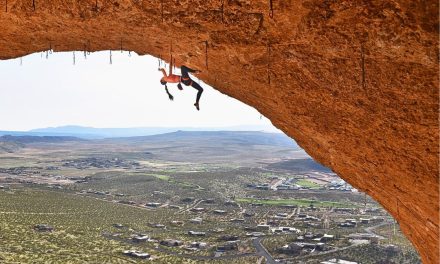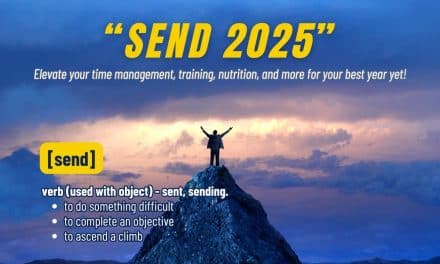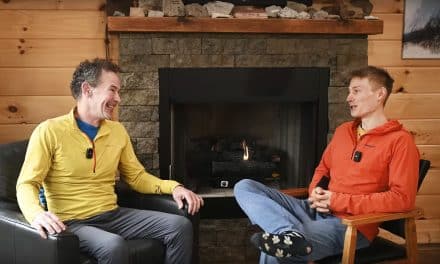This is the second in a five-part series on energy system training as a conceptual model for organizing your workouts. This episode (and the next) focus specifically on the Anaerobic Lactic energy system, and how to best train for adaptations that will increase your anaerobic capacity. This episode covers the sciences of the lactic energy system—important to understand to get the training right (most climbers don’t). The next episode will get into specific training protocols for maximizing your anaerobic capacity.
Subscribe on iTunes (or other podcast player) to “Eric Hörst’s Training For Climbing” podcast. You can also listen to the T4C podcast on Spotify! Please write a review on iTunes!
Anaerobic Lactic Training #1 Rundown
0:20 – Introduction & comments on why the energy system training conceptual model is valuable…especially to advance and elite climbers.
3:17 – “Thank yous” for all the feedback on the first Energy System podcast. My offer to answer YOUR questions via the next “Ask Coach Hörst” podcast…coming in late May. Submit your question on Twitter @Train4climbing and please include your name, home town, and years climbing. Keep your question short and focused.
5:40 – A first look at the anaerobic lactate energy system…and what we’re going drill down into over the next 50+ minutes.
8:00 – Warning about old information and bad advice (and questionable training protocols) that are widespread in the public domain, regarding energy system training. Climbing is a novel activity and in this podcast I am presenting a climbing-specific breakdown of energy system training that may be much different than what you’ve read or heard for other sports…or other coaches. The science has changed somewhat in recent years…
9:37 – Example: “Lactic acid”…a commonly used term by many laypersons, as well as many athletes, coaches, and even some academics not on top of the latest research on bioenergetics. Listen and learn! Lactate anions and protons (H+) are 99% dissociated at human physiological pH…so talk about “lactate” and “proton” (or acidosis), but NOT “lactic acid”!
13:20 – The 3 parts of this podcast: 1. a review of the three energy systems, 2. an in-depth look at the strengths & weaknesses of the Anaerobic Lactic energy system, 3. a detailed presentation of numerous training strategies & protocols for increasing anaerobic capacity (due to length, this third section is in a separate podcast (#24).
14:50 – Part 1: Overview of the 3 energy systems..and how they overlap and interact.
15:48 – It’s all about synthesizing and breaking down ATP to power muscle contraction (and relaxation). Did you know you breakdown your body weight in ATP each day? True story!
18:40 – Review of the ATP-CP system…the source of anaerobic power (highest rate of ATP production & splitting).
21:25 – Teaser on the Anaerobic Lactic energy system.
26:16 – Teaser on the Aerobic energy energy system…the pathway by which ATP can be generated for sustained exercise beyond ~2 minutes, although only at about one-third the power output of the Anaerobic Lactic energy pathway.
29:10 – The unique nature of climbing makes understanding the constant interplay of the 3 energy systems difficult to grasp…and even harder to properly train.
30:10 – For example, frequent occlusion of blood flow to the finger flexor muscles forces a high dependence on anaerobic energy production…and, thus, makes rapid fatigue (drop in power output) a common problem. You can help reduce this dependence by climbing faster and reducing the length of time you grip small/difficult hand holds.
33:00 – A bit on developing climbing research…and about this summer’s International Rock Climbing Researches Association (IRCRA) conference in Chamonix France this summer.
34:02 – Drill down into how the Anaerobic Lactic system works. The three energy systems overlap, but it’s the Lactic system dominates in sustained near-all-out exercise lasting 15 seconds to about 1 or 2 minutes.
36:25 – About the byproducts of anaerobic glycolysis…and how the limit this energy pathway and your capacity to produce ATP via the anaerobic pathway. Details on the source of fatigue and the training adaptations that you are after.
40:10 – Learn how lactate forms…and how lactate is actually a good thing (NOT a bad thing, per the common belief).
42:45 – Learn one of the secrets of Adam Ondra’s climbing prowess. Details on my IRCRA conference presentation…breaking down Adam Ondra’s ascent of Silence (5.15d) and Margo Hayes’ ascent of Biography (5.15a).
44:20 – The drop in power output from 45 seconds to 75 seconds of sustained difficult climbing is profound…as the lactic system begins to fail and the oxidative system becomes the primary source of ATP production around 60 to 75 seconds into near-all-out activity.
46:30 – The importance of lactate, anaerobic enzymes, and lactate transporters to enable continued anaerobic lactic energy system production…and increase anaerobic capacity.
49:20 – Learn what happens to all the lactate created in your climbing muscles.
51:30 – Importance of training up all 3 energy systems…and trying to “keep all 3 balls in the air” from a performance perspective.
53:00 – Why it’s helpful to learn about bioenergetics and sports science—it will empower you to train smarter!
54:45 – Final point: Think of anaerobic power as maximum rate of ATP product (in a 5 second burst)…and view anaerobic capacity as the volume of ATP you can generate in a given period of high-power anaerobic exercise/climbing (say, in 45 seconds or a minute of all-out climbing).
55:28 – Wrap of this part of the Anaerobic Lactic system podcast—breaking this stemwinder of a podcast into two Parts…the next will be released just a few days after this one and it will cover training protocols for developing a greater anaerobic capacity. So tune into Podcast #24 for that important information!
Please Share the T4C Podcast!
Use the download and embed links in this player window to share this podcast on your social media or climbing blog. Thank you!
Follow Eric on Twitter @Train4Climbing
Check out Eric’s YouTube channel.
Music by: Misty Murphy
Copyright © 2000-2018 Eric J. Hörst | All Rights Reserved.







![🚨New Training For Climbing podcast drop! [**Link in bio.**]
This a two-part deep dive into designing a comprehensive, long-term systems approach to training. Coach @eric_horst unpacks—in rich detail—how systems actually function, and he highlights how transformative climbers throughout history “shake up the box” with innovative, highly effective methods to achieve big goals and push the boundaries of our sport.
In Part 1 (#122), Eric blends a concise climbing history lesson with an engineer-like breakdown of how intelligent systems operate. Part 2 (#123) of this series will deliver the actionable strategies you can use to build a personalized, high-performance training system for this winter…and for many seasons to come.
Eric emphasizes that as climbers progress beyond the beginner stage, climbing and training grow increasingly complex—requiring intentional, organized, and year-round development of strength, technique, mental skills, recovery habits, nutrition, and lifestyle management. Rather than ad-lib sessions or singular-focus programs (like only training strength), climbers need a comprehensive system fine-tuned daily and seasonally.
This is an entertaining and thought-provoking episode—so lean in, listen closely, and get ready to feel inspired, challenged, and equipped to level-up your modus operandi at the crag, in the gym, at home, and in everything you do! Listen on Apple Podcasts, Spotify, or online using the web player below.
#climbingtraining #bouldering #indoorclimbing #climbing #climbingpodcast #erichorst #trainingforclimbing @lasportivana @physivantage](https://trainingforclimbing.com/wp-content/plugins/instagram-feed/img/placeholder.png)


